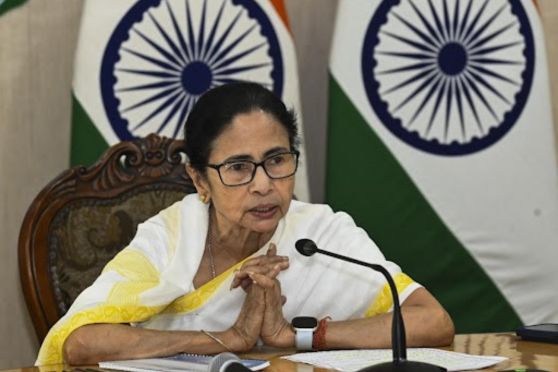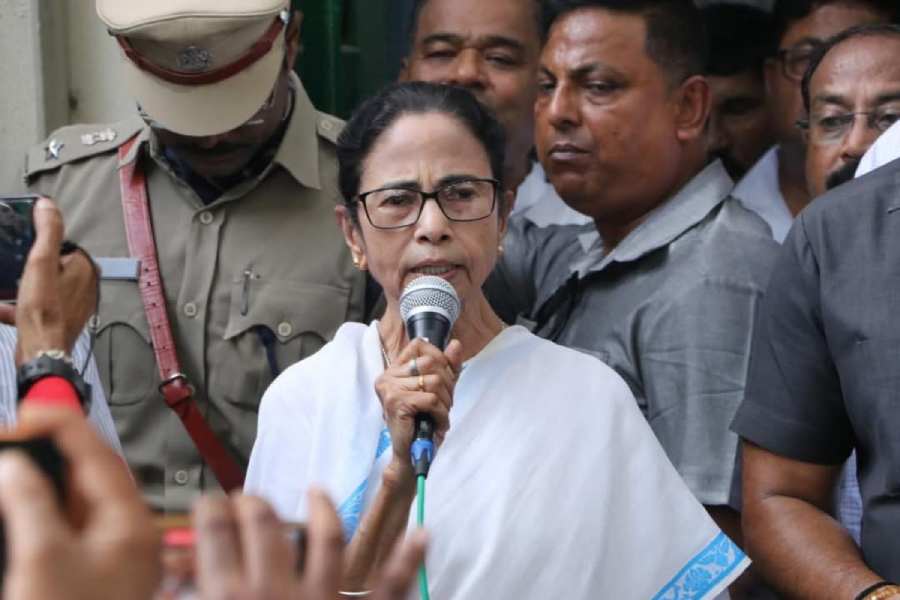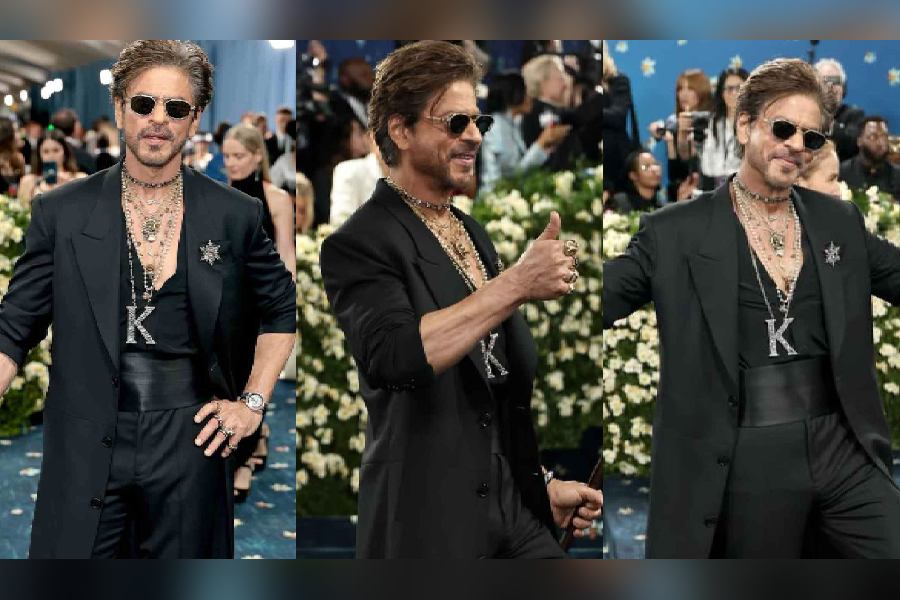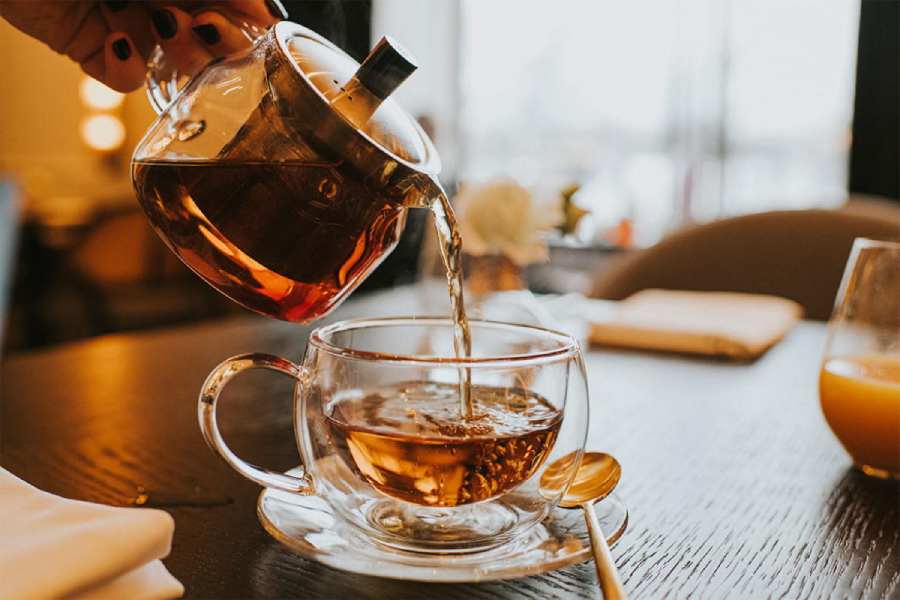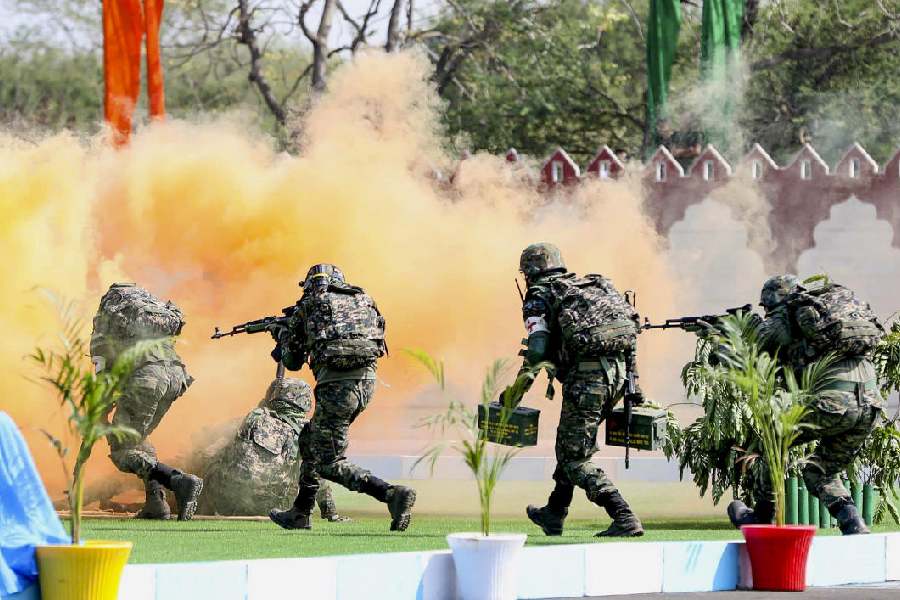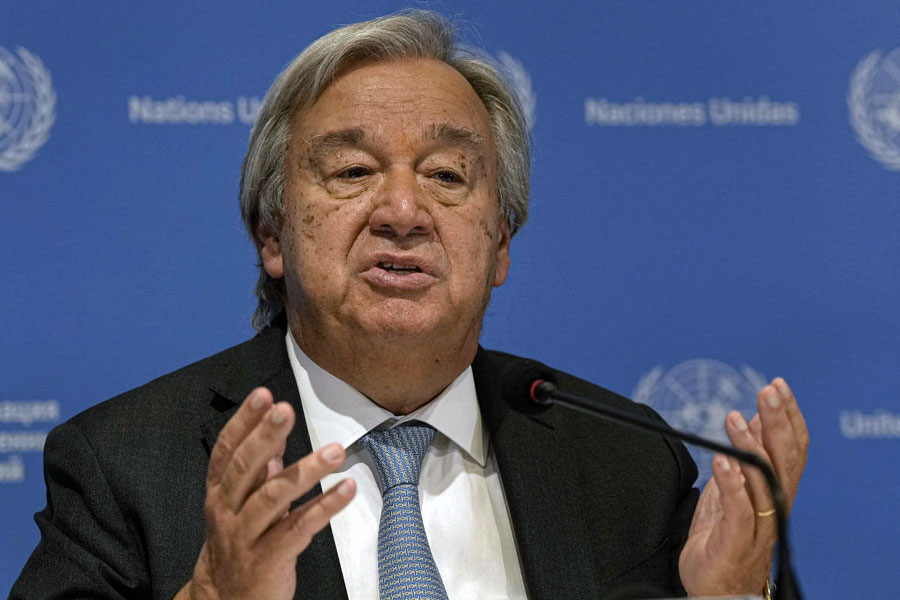 |
| A dhaba on the highway. Picture by Biju Boro |
Across the breadth of Assam, if not its length, it is dhabas that are all the rage. Since the eating-out craze caught on in the mid-1990s, no single genre of gourmet destination has been so delighted in. For the city’s hip set, driving down to a favourite dhaba in nearby Sonapur or Changsari is a “relief” from the plush but predictable hangouts while for well-heeled small-towners starved of most big-city frills, eating out at highway dhabas is but a way to keep up with the city Joneses. “Dhabas are now a style statement of city folks. It feels good to know we aren’t too way behind,” says Dhananjoy Bhattacharyya, an Upper Assam businessman and a dhaba habitué.
It is no wonder then that cashing in on the fad, numerous dhabas now line the highways across the state, concentrating in pockets near the city and other cash-rich towns. National Highway 37 alone boasts the largest number of such dhabas — nearly a hundred-odd from Pancharatnato Saikhowa, catering to a growing number of motorists and foodies from adjoining towns. And most of them are no longer average stopovers for truckers but snazzy joints that have shed the ambience of charpoy stalls. Some recently set-up shops even have printed menus; others are simple places, which have got themselves a makeover. Take the Changsari Dhaba near North Guwahati, for example. Until a couple of years ago, a hut with benches and charpoys under the shade of trees, ready to serve sizzling hot tarka, tandoori roti and chicken dry-fry, it has now spruced up its act in a concrete building and extended its menu to include paneer and fish dishes. So it isn’t surprising to find bejewelled women inside luxury cars tucking in the delicacies, in happy abandon while listening to truck drivers converse with each other.
While in Punjab dhabas are commonly named after their owners, and in Haryana after birds, in the state it is an eclectic mix where the common term is of course the dhaba. So you have names ranging from Highway Dhaba to Highway City Dhaba, the New City Dhaba, City Dhaba, Shiva Highway Dhaba, Wild East Dhaba, Dhaba Nishita, Sunrise Dhaba, Dhaba Y2K, Semi Dhaba, Line Hotel Dhaba, Bongaon Highway Dhaba, Dhaba NH-37, Dhaba-The Pleasure and even Dharitri- the A to Z of Dhaba.
Clearly, Assam’s dhabas now are actually reincarnated hybrids of original Punjab-type dhabas. Rugged interiors, tree toilets and robust fare have given way to air conditioned eating areas, standard urinals, PCO booths, kiosks selling paan-tamul and a variety of popular global dishes. So while a pan-Indian fare ranging from tandoor delicacies to dosas could be the essence, the menu card is sure to list all brands of cuisine — Chinese chowmein, Tibetan momos, Italian pizza, French augratin and even Assamese tenga. “Serving up only tandoor fare is passé. We cater to all contemporary tastes, including the very popular Assamese thali,” says Sargajit Bordoloi, partner-proprietor of Highway Dhaba in Sonapur who was discerning enough to notice that family elders prefer it to other food.
Definitely it is Sonapur, home to several dhabas, with proximity to Guwahati, that is taking the dhaba culture to dizzying heights. However, burgeoning corporate wallets and an aspirational generation across the state are also ensuring that smaller pockets do not lag behind in the gastronomic activity. On weekends, Dhaba NH-37 in Barhapjan, three-odd km from Doom Dooma in Upper Assam, spills over with gourmets from the town, the neighbouring Hindustan Lever campus, adjoining tea estates, the oil townships of Duliajan and Digboi, Tinsukia, and even Dibrugarh, 63 km away. Lolit Gogoi, who opened the joint in 2002 basically to cater to truckers of the Doom Dooma Hindustan Lever factory on a plot of land leased out by the Lever management, says, “The dhaba culture was just making inroads then. It was a time to attract customers other than truckers. So I dressed up the place. Now it has become an outing destination for tea and oil executives, businessmen, students ... even tourists en route to Arunachal stop for a meal.”
“Travellers and tourists who now take the road to and fro between Lower and Upper Assam like to stop at dhabas for quick bites, which is why so many have mushroomed and are doing good business,” agrees Bordoloi.
The clutch of Sonapur dhabas, which shot into prominence after chief minister Tarun Gogoi showcased his “dhaba barometer” by hosting a dinner for mediapersons in one of them to prove that the people were no longer scared of night outings, was what set the dhaba gravy train rolling. Now, other than travellers and the swish set, dhabas have also become a haunt for the young brigade. For the latter, a drive to a dhaba is both “enlivening” and “sensible”. College-goer Rahul Bargohain, who “freaks out” at the Sonapur dhabas, puts it succinctly, “There are too many prying eyes in city hangouts. Dhabas are fun getaways for both dates and gatherings.”
For Duliajan-based oil executive Sanjeev Gogoi it is a different reason. “In the nearby towns of Dibrugarh and Tinsukia classy joints are few. A sense of ennui has also set in after having visited these restaurants over so many years. Driving down to a dhaba is refreshing. The informal ambience and open space allows my five-year-old to hop skip and jump, and I do not have to worry about social embarrassment,” he explains.
So dhabas, unpretentious and imbued with traditional bonhomie (“Ei Bhaiti, khaboloi ki aase?” Hey lad, What’s on the menu?) are the destination. Away from the bustle of urban centres, set in open natural surroundings with ample space and parking areas, where you can also sit and eat inside your parked vehicle, they are alluring to say the least. But above all, it is savoury fare at modest rates that actually tugs patrons. Certainly the prices of food at these dhabas are not as low as those that are frequented by truckers, but they are still way less than restaurants in cities and towns. Moreover, night callers are obliged by the dhabas, unlike city restaurants, which down shutters early. Says city businessman Bijoyananda Chowdhury, a self-confessed dhaba freak, “At a dhaba you can let your hair down, shrug off ‘propah’ table manners, sit, chat or stroll in the campus while eating, drinking or gossiping late into the night. And then, from quick bites and hearty lunches to snacks to accompany a few pegs, a dhaba has it all.”
A heady combination of ambrosia, ambience and assertive business thus is giving dhabas the edge over even plush restaurants, and its owners are striking gold. They admit they do not know how long their fortune will last. After all, it is a culture that has grown in the absence of five-star and speciality boutique restaurants. But while the going is good, it is spice and everything nice.


